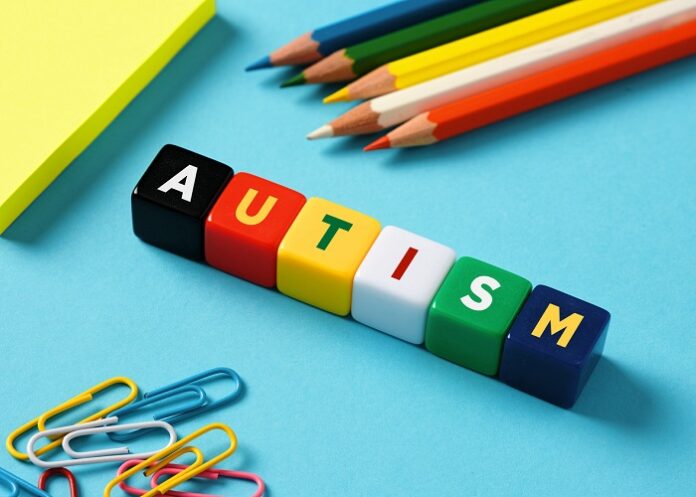Autism diagnosis rates are skyrocketing in the US, say experts, having nearly tripled between 2011 and 2022 during which time it climbed by a massive 175%, according to recent findings.
The improvement and expansion of universal developmental screening probably accounts for some of that increase found in their study, according to Kaiser Permanente’s Luke Grosvenor, who led the research.
“But the magnitude of the rate increases and variability by age, gender, race and ethnicity suggests factors other than improved screening are also playing a role.”
Autism disorder, which is caused by differences in the brain, has been reported to be nearly four times more common among boys than in girls, reports The Independent.
Around one in 36 children has been diagnosed with autism, according to recent data.
To reach their conclusions, Grosvenor, physicians at Kaiser Permanente and other health research facilities countrywide, used data from more than 12m patients enrolled in major healthcare systems.
Their findings, published in JAMA Network Open, showed that the autism diagnosis rate was highest among children aged five to eight-years-old, rising from 2.3 per 1 000 people in 2011 to 6.3 in 2022.
The largest increase was among young adults, women and girls. New diagnoses for girls soared by 305%, while diagnoses for boys rose by 185%.
“We’re seeing a narrowing in the gap between males and females being diagnosed,” said co-author Lisa Croen. “This is very interesting, but we don’t know why. That’s a direction for future research to explore.”
The rise was especially notable in adults aged 26 to 34, with a 450% increase in diagnoses.
“Rates reported here may underestimate the true prevalence of (diagnosis) in adults, especially older female adults, as many would not have been screened in childhood and remain undiagnosed,” the authors wrote.
“Nevertheless, our findings indicate that the population of autistic adults in the US will continue to grow, underscoring a need for expanded healthcare services.”
There were also differences reported by race, with diagnosis rates the highest among indigenous children and adults. This may be because of the proximity between native communities and specific mental health resource network locations.
The study noted there were no increases in diagnoses in 2020, possibly due to healthcare disruptions caused by the Covid-19 pandemic. Rates rebounded after 2020 and were higher in 2021 and 2022 than previous years.
“Further research is warranted into whether this reflects increased access to diagnostic services versus any true increase in diagnosis prevalence,” the report said.
Study details
Autism Diagnosis Among US Children and Adults, 2011-2022
Luke Grosvenor, Lisa Croen, Frances Lynch, et al.
Published in JAMA Network on 30 October 2024
Abstract
Importance
An improved understanding of autism spectrum disorder (ASD) prevalence over time and across the lifespan can inform health care service delivery for the growing population of autistic children and adults.
Objective
To describe trends in the prevalence of ASD diagnoses using electronic records data from a large network of health systems in the US.
Design, Setting, and Participants
This cross-sectional study examined annual diagnosis rates in health records of patients in US health systems from 1 January 2011 to 31 December 2022. Eligible individuals were included in the study sample for a given calendar year if they were enrolled in a participating health system for at least 10 months out of the year. Data were extracted from 12 sites participating in the Mental Health Research Network, a consortium of research centres embedded within large, diverse healthcare systems.
Main Outcome and Measures
Diagnoses of ASD were ascertained using International Classification of Diseases, Ninth Revision (ICD-9) and International Statistical Classification of Diseases and Related Health Problems, Tenth Revision (ICD-10) revision codes. Annual diagnosis rates were calculated as the number of unique members diagnosed, divided by the total members enrolled.
Results
A total of 12 264 003 members were enrolled in 2022 (2 359 359 children aged 0 to 17 years [19.2%]; 6 400 222 female [52.2%]; 93 002 American Indian or Alaska Native [0.8%], 1 711 950 Asian [14.0%], 952 287 black or African American [7.8%], 2 971 355 Hispanic [24.2%], 166 144 Native Hawaiian or Pacific Islander [1.4%], and 6 462 298 white [52.7%]). The ASD diagnosis rate was greatest among 5-to-8-year-olds throughout the study period and increased by 175% among the full sample, from 2.3 per 1000 in 2011 to 6.3 per 1000 in 2022. The greatest relative increase in diagnosis rate from 2011 to 2022 occurred among 26-to-34-year-olds (450%) and increases were greater for female vs male individuals among children (305% [estimated annual percentage change (EAPC), 13.62 percentage points; 95% CI, 12.49-14.75 percentage points] vs 185% [EAPC, 9.63 percentage points; 95% CI, 8.54-10.72 percentage points], respectively) and adults (315% [EAPC, 13.73 percentage points; 95% CI, 12.61-14.86 percentage points] vs 215% [EAPC, 10.33 percentage points; 95% CI, 9.24-11.43 percentage points]). Relative increases were greater in racial and ethnic minority groups compared with White individuals among children, but not adults.
Conclusions and Relevance
In this cross-sectional study of children and adults in the US, ASD diagnosis rates increased substantially between 2011 and 2022, particularly among young adults, female children and adults, and children from some racial or ethnic minority groups. Diagnosis prevalence trends generated using health system data can inform the allocation of resources to meet the service needs of this growing, medically complex population.
JAMA Network Open article – Autism Diagnosis Among US Children and Adults, 2011-2022 (Open access)
See more from MedicalBrief archives:
Landmark intervention may reduce autism diagnosis rates by two-thirds
Autism and ADHD can co-exist and cases are growing, says expert
Brain changes in autism more sweeping than thought – UCLA study

